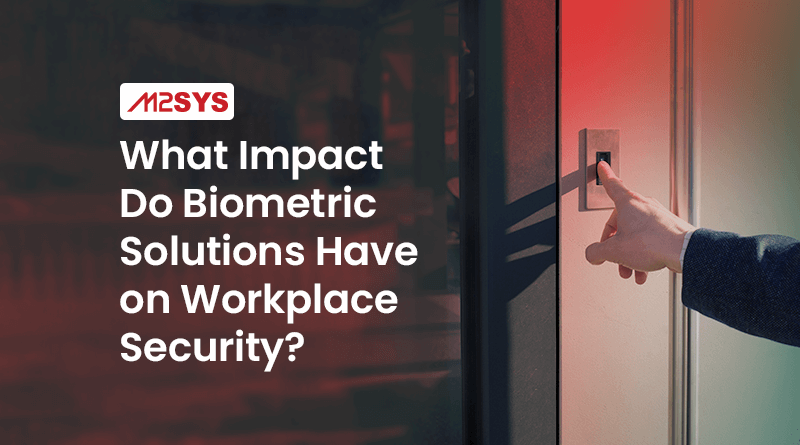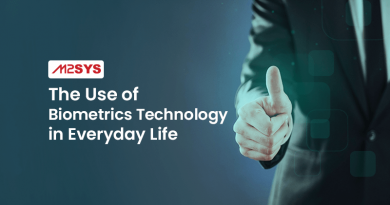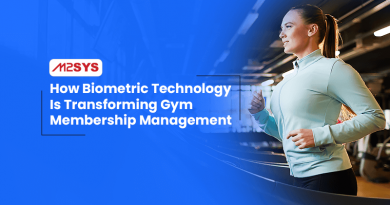What Impact Do Biometric Solutions Have on Workplace Security?
As traditional methods of verification and authentication are proving to be more prone to security flaws, advanced technologies like biometrics are quickly sweeping over the world. When compared to biometric modalities that are specific to each person, passwords and logins are more vulnerable to hacking. Besides, biometrics technology offers quicker screening methods and an extra layer of security.
Additionally, it eliminates the need to generate unique passwords, and the worry about keeping them secure each time you need to enter into an online application or website. Utilizing biometric measurements for verification delivers a seamless onboarding process, which is important to modern clients who value speed and convenience in all services. Evidently, biometric systems are evolving into a popular option among banks and other financial organizations since they are getting more accessible and affordable over time.
The need for strong and trustworthy authentication solutions is growing as the number of occurrences of digital identity theft and cybercrime increases daily.
Biometric authentication technology: What is it?
A security procedure known as biometric authentication totally relies on a person’s individual biological traits to confirm their validity. This technique compares the biometric information to the verified and valid database data.
There are various types of biometric systems. These biometric patterns can be obtained and screened via biometric tools like fingerprint scanners, iris and retinal scanners, voice and facial recognition software, liveness detectors, and more. A biometric authentication system, for instance, confirms that a person caught in a photograph is actually that person in the flesh and not just a still or flat image.
How does biometric work?
Biometric systems compare two sets of data captured via biometric sensors:
- The first one is presented by the owner of the device.
- The second one belongs to the device visitor.
The match between the two data sets need not be exactly identical, but similar since no machine provides 100% efficiency. Here’s how it works:
ID Document Capture:
Any new user is required to take a picture of his/her government-issued ID, such as a driver’s license or passport, with their smartphone or webcam. Technologies like AI, machine learning, computer vision, and human review are used to determine if the ID is fraudulent or authentic.
Selfie Capture:
Then, the user is asked to take a corroborating selfie. It’s then compared to the picture on the ID document to make sure that the person is real and not using a stolen ID.
3D Face Map Creation:
Some solutions will include a liveness check via 3D face mapping (face recognition technology) to ensure that the online user is physically present and not a spoof. This captured face map is then stored and assigned to the new customer during the initial enrolment process.
Online Account Creation:
After all the verifications, including ID checks, along with additional background checks, the vetted user is provided account credentials i.e., a username and password.
Ongoing User Authentication:
Whenever users want to log in, they only need to capture a new selfie which creates a new face map that is compared to the original 3D face map captured during the enrolment. It only takes a few seconds.
Benefits of Biometric
Better Security in the Workplace
In the workplace, biometrics can be used to unlock/lock and monitor doors, assuring only those authorized to enter are allowed access. In the said manner, it reads a person’s unique features such as iris and fingerprint biometrics or face to ensure that only an actual employee can clock in and out.
High Accuracy
Unlike biometric security devices that are highly accurate, traditional security systems rely on passwords or smart cards which, sometimes, can be inaccurate. Biometric systems make use of biological characteristics such as fingerprints and retinal scans, which provide unique data sets as soon as the system is set up correctly, and which cannot be replicated easily. Thus, no one else but the authorized users will be able to gain access.
Improved Payroll Accuracy
Biometric systems allow companies to eliminate the costs and mistakes occurring in manual data input which in turn, impacts on employee paychecks. Biometrics can keep track of payroll hours faster and more accurately to ensure that payroll information is transmitted correctly to the concerned department along with the exact time/overtime spent working.
Offers Convenience
Undoubtedly, passwords and pins can be easily forgotten, stolen, and/or hacked. But, since people can’t easily steal your genetics, then, biometrics is more secure. However, when people forget their passwords, it creates a lot of inconvenience for them. The same goes for smart cards and keys. But with biometrics, it won’t be the case as there won’t be issues of sharing, duplication, or fraud.
Adoption of biometric technology
This technology is quick, dependable, precise, and small. Workplaces and other businesses can utilize it in the form of a biometric device for mobile or a fingerprint scanner for mobile that can be used to rapidly and accurately collect real-time workforce data. These characteristics contribute to the quick adoption of biometrics technology; at this rate, it will undoubtedly take over the entire world.











